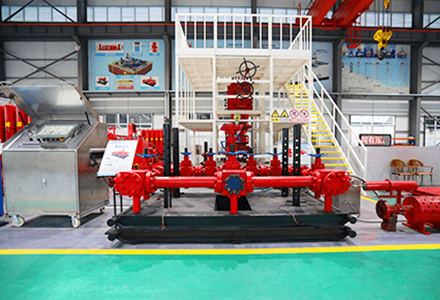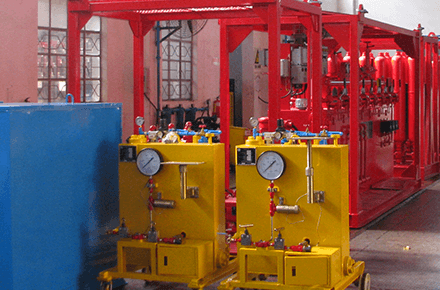Oilfields are complex industrial environments where safety must be paramount. However, despite stringent safety protocols and regulations, accidents still occur. These accidents can result in injuries, environmental damage, and significant financial losses. Fortunately, many oilfield accidents are preventable with proper training, equipment maintenance, and adherence to safety procedures. In this article, we will discuss four preventable causes of oilfield accidents and how they can be mitigated.

One of the leading causes of oilfield accidents is the lack of proper training and supervision. Working in an oilfield environment requires specialized knowledge and skills to operate heavy machinery, handle hazardous materials, and navigate potentially dangerous conditions. When workers are not adequately trained or supervised, they may make mistakes that lead to accidents.
Implementing comprehensive training programs is essential to ensure that workers understand the risks associated with their tasks and know how to perform them safely. These programs should cover topics such as equipment operation, emergency procedures, hazard recognition, and personal protective equipment (PPE) usage. Additionally, supervisors should provide ongoing guidance and oversight to ensure that workers adhere to safety protocols at all times.
Oilfield companies should invest in ongoing skill development for their employees to keep them updated on the latest safety practices and technologies. This may include regular safety meetings, hands-on training sessions, and participation in industry conferences and workshops. By continuously enhancing their skills and knowledge, workers can better identify and mitigate potential hazards in the workplace.
Another common cause of oilfield accidents is equipment failure and maintenance issues. Oilfield operations rely heavily on various types of machinery and equipment, including drilling rigs, pumps, valves, and pipelines. When these components malfunction due to poor maintenance or manufacturing defects, accidents can occur, resulting in injuries and costly downtime.
To prevent equipment failures, oilfield companies must conduct regular inspections and maintenance checks to identify and address potential issues before they escalate into safety hazards. This includes inspecting machinery for signs of wear and tear, replacing worn parts, and lubricating moving components to ensure smooth operation. Additionally, companies should follow manufacturer guidelines for maintenance schedules and procedures to prolong the lifespan of their equipment.
In addition to routine maintenance, oilfield companies can leverage predictive maintenance techniques to anticipate equipment failures and prevent unplanned downtime. This may involve using sensors and monitoring systems to track equipment performance and detect abnormalities in real-time. By identifying potential issues early on, companies can take proactive measures to address them before they result in accidents or production delays.
Effective hazard communication and risk assessment are crucial for preventing oilfield accidents. Workers need to be aware of potential hazards in their environment and understand how to mitigate risks to ensure their safety and the safety of their colleagues. However, when communication channels are unclear or inadequate, and risk assessments are not conducted thoroughly, accidents are more likely to occur.
Oilfield companies must establish clear communication channels to ensure that workers receive timely information about potential hazards and safety procedures. This includes providing comprehensive safety manuals, conducting regular safety briefings, and using signage and labels to identify hazards in the workplace. Additionally, workers should be encouraged to report any safety concerns or near misses to management promptly.
Before starting any oilfield operation, companies should conduct comprehensive risk assessments to identify potential hazards and develop appropriate control measures. This involves evaluating factors such as equipment integrity, environmental conditions, and human factors that could contribute to accidents. By systematically assessing risks and implementing controls, companies can minimize the likelihood of accidents occurring on-site.
Ultimately, the most preventable cause of oilfield accidents is the failure to follow established safety protocols. Even with robust training programs, well-maintained equipment, and effective hazard communication, accidents can still happen if workers do not adhere to safety procedures. Whether due to complacency, negligence, or pressure to meet production targets, deviating from safety protocols can have serious consequences.
Creating a culture of safety is essential for preventing accidents in the oilfield. This involves promoting safety as a core value within the organization and empowering workers to prioritize safety in everything they do. Companies should encourage open communication, recognize and reward safe behavior, and hold individuals accountable for unsafe actions. By fostering a culture of safety, companies can create an environment where accidents are less likely to occur.
Preventing oilfield accidents requires a commitment to continuous improvement and adaptation. Companies should regularly review their safety policies and procedures, solicit feedback from workers, and identify areas for enhancement. Additionally, they should stay informed about industry best practices and emerging technologies to incorporate into their safety programs. By staying proactive and responsive to evolving safety challenges, oilfield companies can better protect their workers and the environment.

While oilfield accidents can have severe consequences, many of them are preventable with the right measures in place. By addressing common causes such as lack of proper training, equipment failure, inadequate hazard communication, and failure to follow safety protocols, oilfield companies can significantly reduce the risk of accidents occurring. By prioritizing safety and investing in proactive measures, companies can create a safer working environment for their employees while minimizing the impact on operations and the surrounding communities.
Guangzhou Dongsu Petroleum D&E Equipment Co., Ltd. is one of the earliest professional manufacturers of surface mounted BOP control system in China. Since the early 1980s, The company is committed to the development, design, research and development of surface mounted BOP Control System, Pneumatic Pressure Test Unit, Choke Manifold Control Panel,etc. In 2017, we established a technical service training center integrating after-sales training, maintenance, testing and transformation to provide high-quality and efficient services.
Dongsu not only increases the investment in the innovation and development and technology upgrading of the leading products, such as BOP Control System, Choke manifold Control panel and High Pressure Test Unit, but also takes the lead in producing the first wireless remote control BOP control system in China, which is used in Tarim oilfield and has safe and reliable performance through practice.If you would like more information, please contact us.
By continuing to use the site you agree to our privacy policy Terms and Conditions.